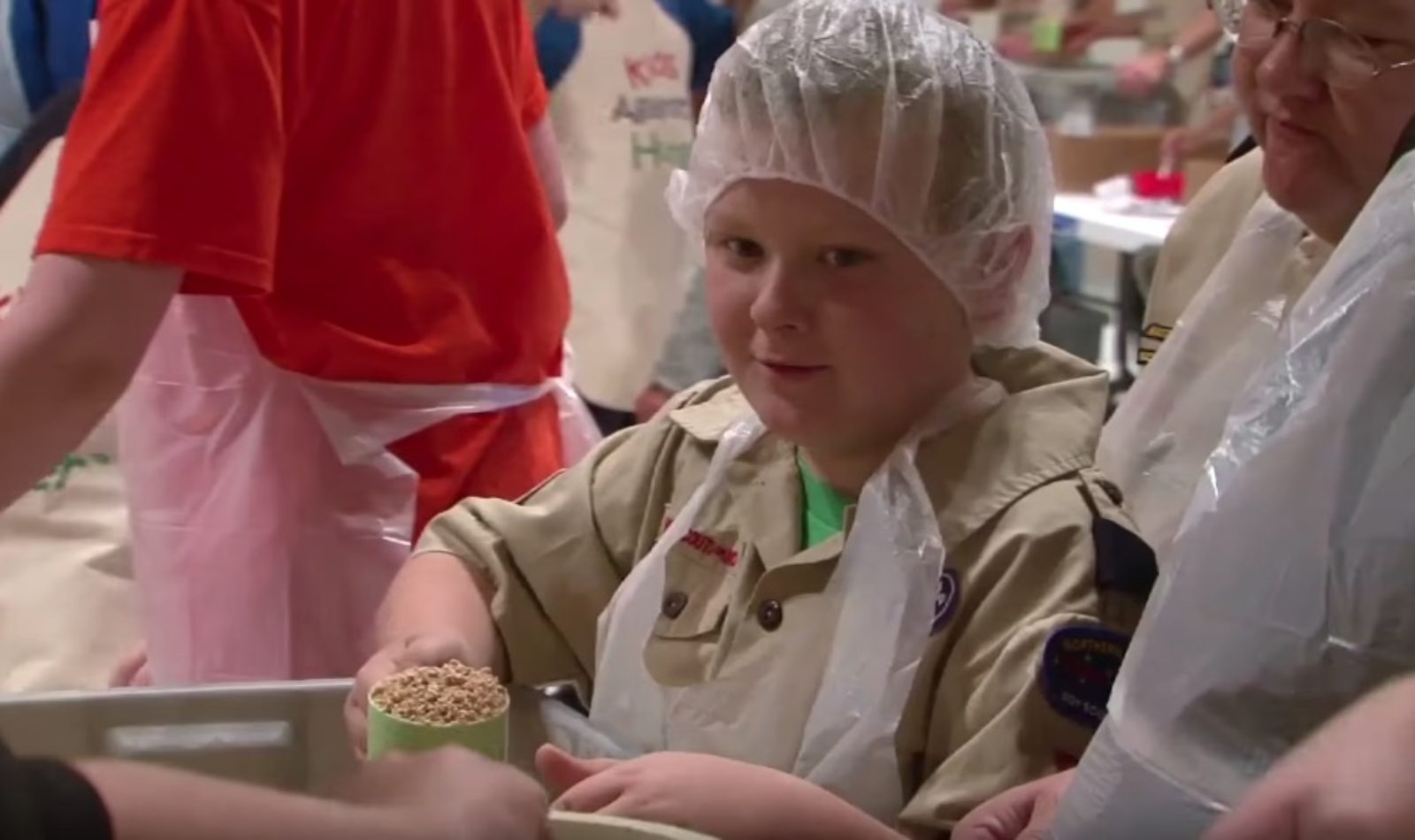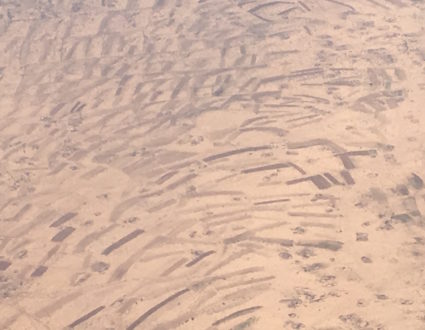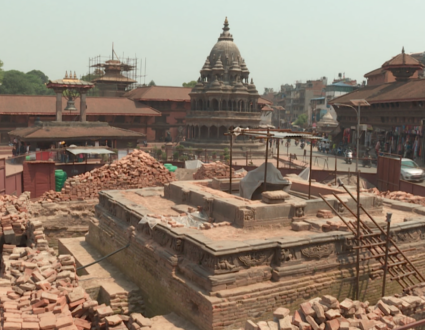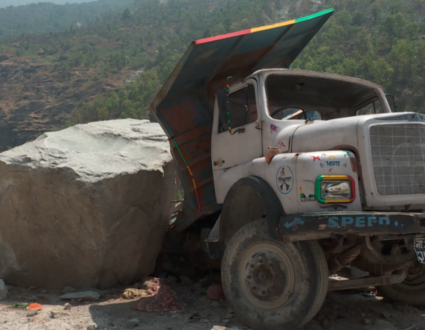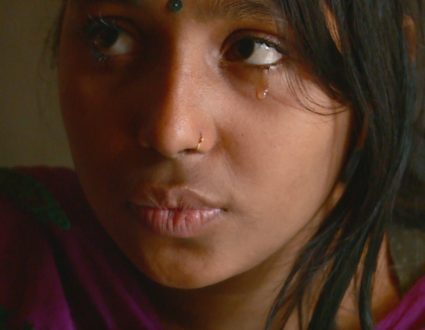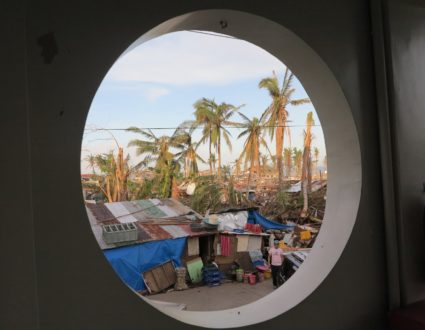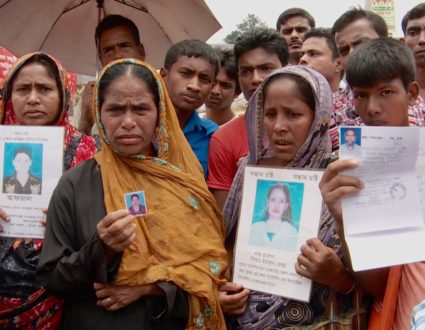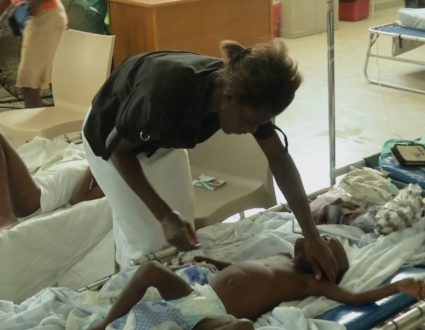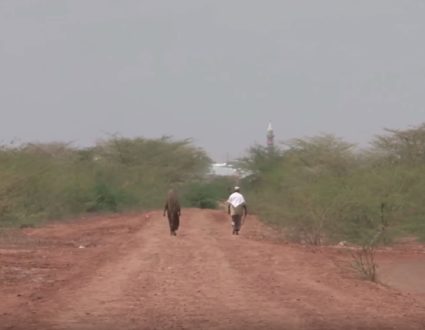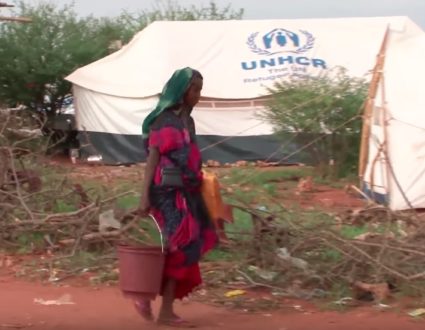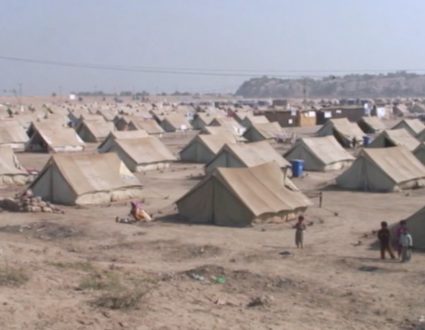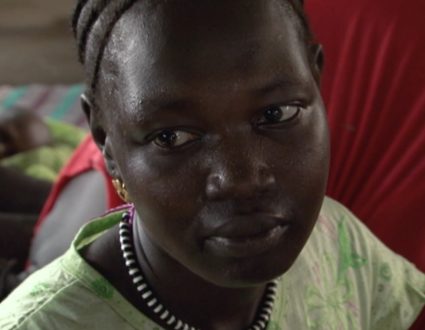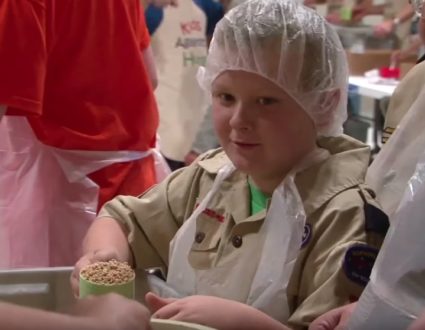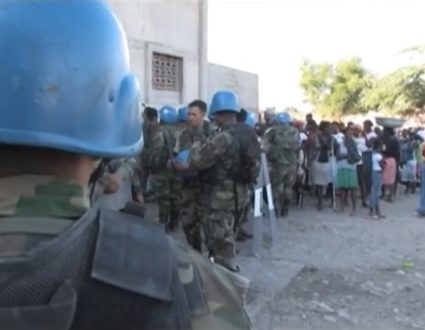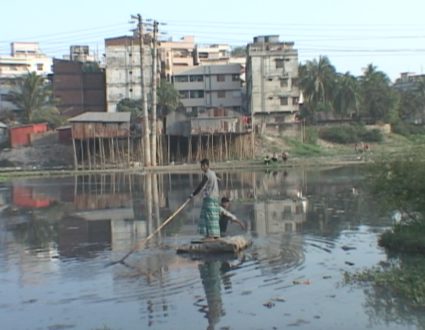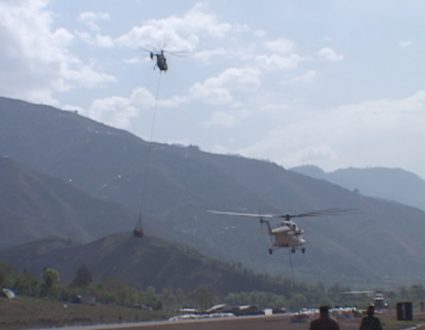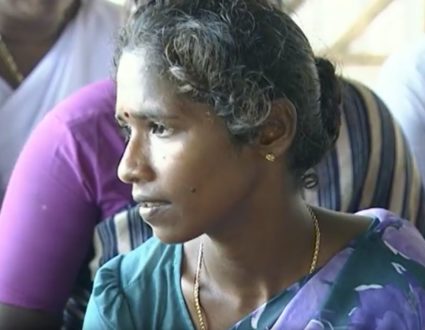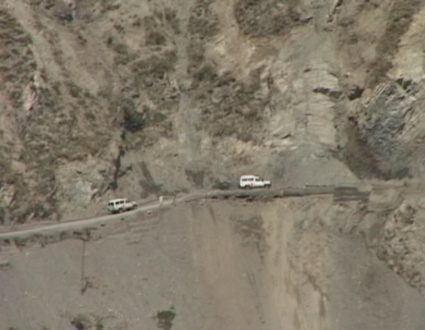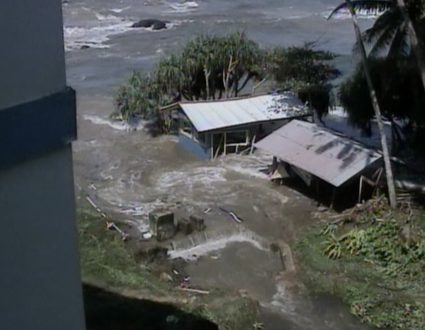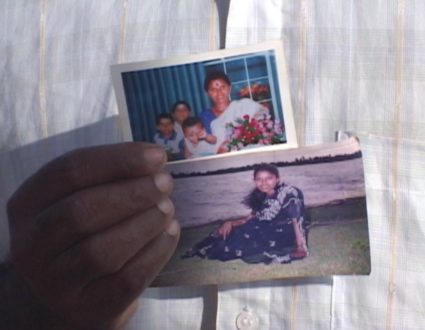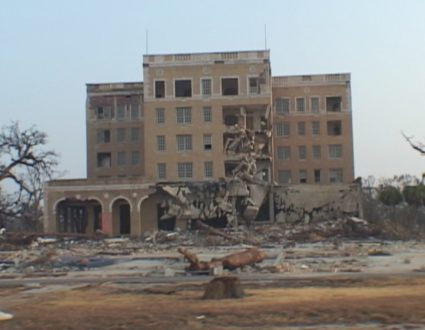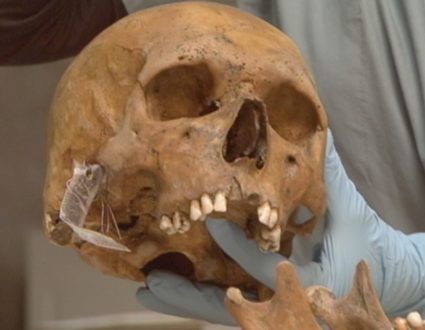GWEN IFILL: Next: too many crises, too little money.
Special correspondent Fred de Sam Lazaro reports on efforts by private aid organizations to keep the charity flowing.
A version of this story aired on the PBS program “Religion & Ethics Newsweekly.”
FRED DE SAM LAZARO: It’s been a relentless run of disasters around the world lately, earthquakes in Japan, Haiti and Chile, tornadoes in the U.S., floods in Pakistan, Australia, and China.
For relief organizations, it’s been a challenge to keep up.
Mike Lloyd, who heads a Minnesota group called Kids Against Hunger, says some disasters bring immediate responses.
MIKE LLOYD, Kids Against Hunger: When the earthquake struck in Haiti, there was a tremendous outpouring for that event. And it went on for several months, where we had groups all over the country wanting to pack meals, and it was a real scramble for us to meet that demand.
And, of course, donor dollars followed the demand for packaging the meals. When the Joplin tornado happened, of course we had a similar experience.
FRED DE SAM LAZARO: Each year, Kids Against Hunger volunteers have packed some 50 million ready-to-mix meals to be sent to needy regions around the world.
But Lloyd says not all disasters are created equal in donors’ minds. The famine and fighting in Somalia and other countries in the Horn of Africa that have displaced hundreds of thousands into refugee camps has been more of a challenge.
MIKE LLOYD: Situations like we see in the Horn of Africa are long-term. They are political, at least partly political. They’re somewhat related to the drought situation, but it’s been a long-term political struggle in those areas. And that has just not — has not excited the packers and the donors in the same way.
DANIEL WORDSWORTH, American Refugee Committee: It’s not so much about compassion fatigue. I think people are as compassionate today as they ever have been. For us, it’s actually more a belief fatigue.
FRED DE SAM LAZARO: Daniel Wordsworth says many people are reflexively wary of some countries. Wordsworth heads another Minneapolis-based aid agency, American Refugee Committee, or ARC.
ARC also saw a huge response to the Haiti earthquake, but support for Pakistan, hit by massive floods a few months later, was far weaker. Wordsworth says, at first, there was also indifference toward the Horn of Africa.
DANIEL WORDSWORTH: I think what we see in both Pakistan, and we’re seeing it very strongly in Somalia, is that — and it really is almost confronting to us — is the lack of belief that people have for that country.
So, it’s not that they don’t feel compassionate. It’s that they just can’t make the connection. They don’t believe that either change is possible there or that their money, or their resources, what they give, will actually translate into something different on the ground. That’s the crisis that we’re seeing.
FRED DE SAM LAZARO: Wordsworth says it’s the deeds of 1 percent of the population that have given Pakistan and Somalia reputations as hostile terrorist havens.
So, in its fund-raising campaigns for Somalia, American Refugee Committee has tried to defang Somalia’s image, drawing heavily on the fact that the largest Somali-American community is right in its home base in Minneapolis.
DANIEL WORDSWORTH: Our doctors may be Somali, our local business professionals Somali, our taxi drivers Somali. We actually get to meet the 99 percent on a regular basis.
MAN: I’m a star.
WOMAN: I’m a star.
WOMEN: And we are a star.
FRED DE SAM LAZARO: Somali Minnesotans, prominent and otherwise, have led a varied media campaign, drawing in the larger local community.
WOMEN: We hosted a charity dinner.
WOMAN: I’m a star because I donated money that I earned from a car wash.
WOMAN: I organized an art show.
WOMAN: I collected pennies for Somalia.
DANIEL WORDSWORTH: It’s a whole different side of Somali culture that people don’t normally see. And then through — I think, through that lens, you can see a dynamic, amazing group of people. And your ability then to believe that if this country is full of people like this, there’s huge hope for that country.
FRED DE SAM LAZARO: Is it working?
DANIEL WORDSWORTH: It’s working really well for us.
FRED DE SAM LAZARO: How do you know?
DANIEL WORDSWORTH: Actually, we are seeing the same outpouring of compassion that we saw for Haiti. I think we would be one of the very few organizations in the world that can say that, that we’re tracking about the same.
FRED DE SAM LAZARO: Donors fall into two distinct categories, according to Mike Lloyd, individuals who give small amounts and often volunteer their time, and large donors, individuals, as well as corporations and foundations. He says grassroots campaigns and images of suffering are less effective with large donors than they are with the individuals.
MIKE LLOYD: Those gifts are given from the heart. They really react to the emotional sense that they’re making a difference in an individual’s life.
And when we talk to corporate givers or large donors, their dollars are usually more intended, or in their mind at least, to things that are going to have lasting impact. So they’re less likely to be driven by the emotional aspect of having an impact on an individual and what’s going to happen with my dollars. Are these going to really change anything, or is it just going to be the same after the dollars are gone?
FRED DE SAM LAZARO: ARC’s Wordsworth says smaller donations are also more likely to keep coming, despite the economic downturn, since people tend to be more sympathetic in tough times. Corporate donors, as well as well-heeled individuals, need more convincing, he says.
DANIEL WORDSWORTH: Maybe it’s a case that, when you’re investing a lot, it’s like any investor. You know, you want to actually have a pretty strong argument made to you before you’re willing to step forward with substantive amounts.
And so that group has been — has taken more time. And I’m not actually claiming at this point that we have had huge success with folks with deep pockets. But, again, I know, in the case of one individual, that actually what made the difference for him was sitting down with Somali people here in the Twin Cities, that, actually, again, it was just that face-to-face interaction.
FRED DE SAM LAZARO: Despite the challenges, American Refugee Committee says it has gotten some major corporate donations, most likely because their corporate headquarters are nearby.
DANIEL WORDSWORTH: Groups like Best Buy, General Mills, the Mosaic Company, UCare, a health insurance provider, because they’ve got Somali staff, they can see it more quickly, and then the rest of the staff and the rest of the company comes around behind them and shows some solidarity.
FRED DE SAM LAZARO: ARC has used its donations to run a hospital in the Somali capital, Mogadishu.
But there’s always more to be done, says Linn Biorklund, who works in refugee camps along Ethiopia’s border with Somalia for the group Doctors Without Borders.
LINN BIORKLUND, Doctors Without Borders: I think it’s important to point out that the emergency is not over. It’s ongoing. We continue to see people coming. And these people are living here in the camps. And they are in great need of humanitarian assistance.
FRED DE SAM LAZARO: One of the biggest challenges is to keep attention focused on ongoing crises, like that in the Horn of Africa, even as they recede from headlines or get buried by bigger headlines about a new disaster.
GWEN IFILL: Fred’s reporting is a partnership with the Under-Told Stories Project at Saint Mary’s University in Minnesota.
Ongoing emergencies
Aid organizations struggle to keep attention focused on ongoing crises amid natural disasters.
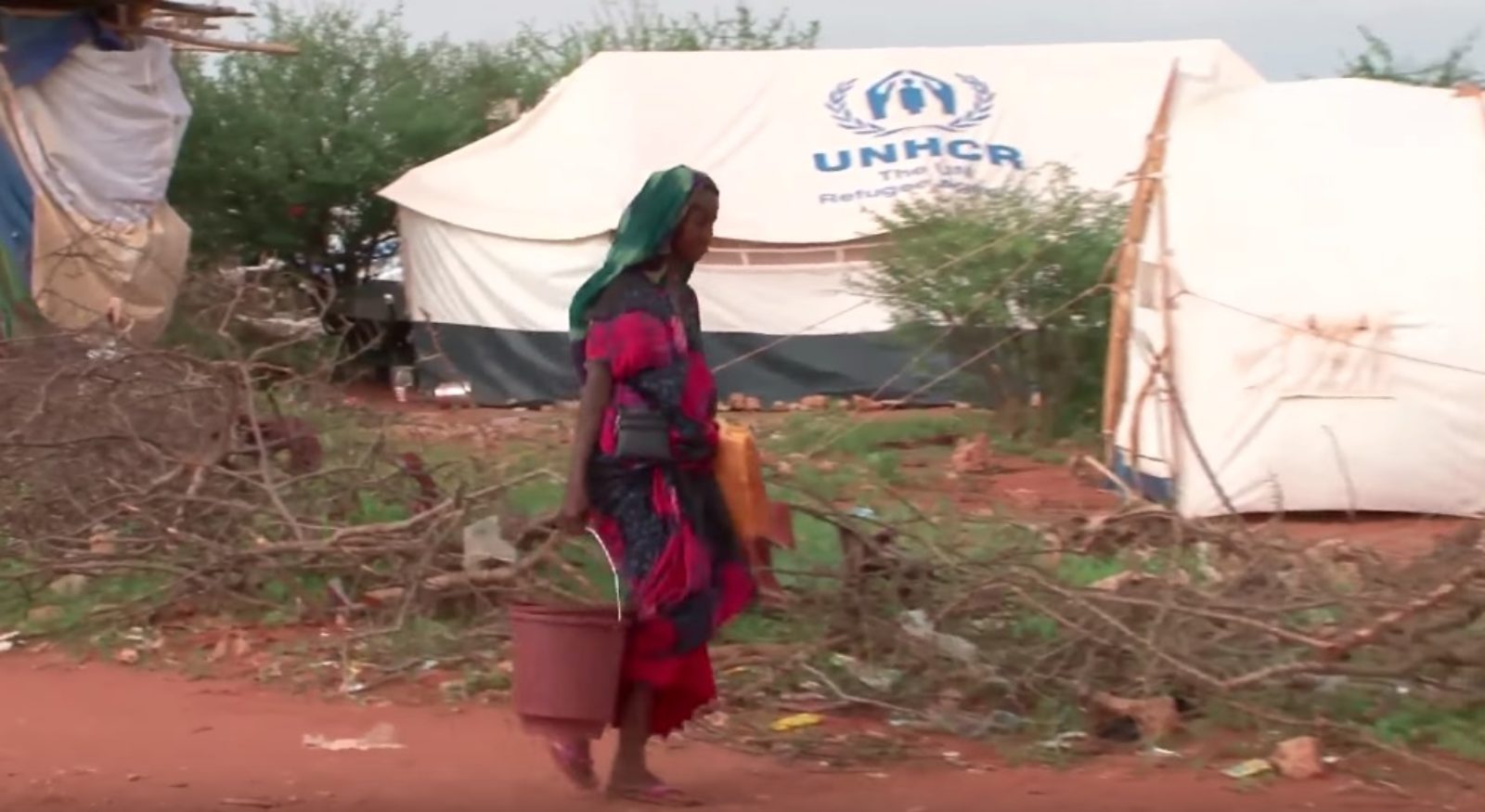
Divided Donor Attention
Not all disasters are created equal in donors’ minds. The famine and fighting in Somalia and other countries in the Horn of Africa that have displaced hundreds of thousands into refugee camps has been more of a challenge to raise relief aid for.

MIKE LLOYD
“Situations like we see in the Horn of Africa are long-term. They are political, at least partly political. They’re somewhat related to the drought situation, but it’s been a long-term political struggle in those areas. And that has just not — has not excited the packers and the donors in the same way.”
